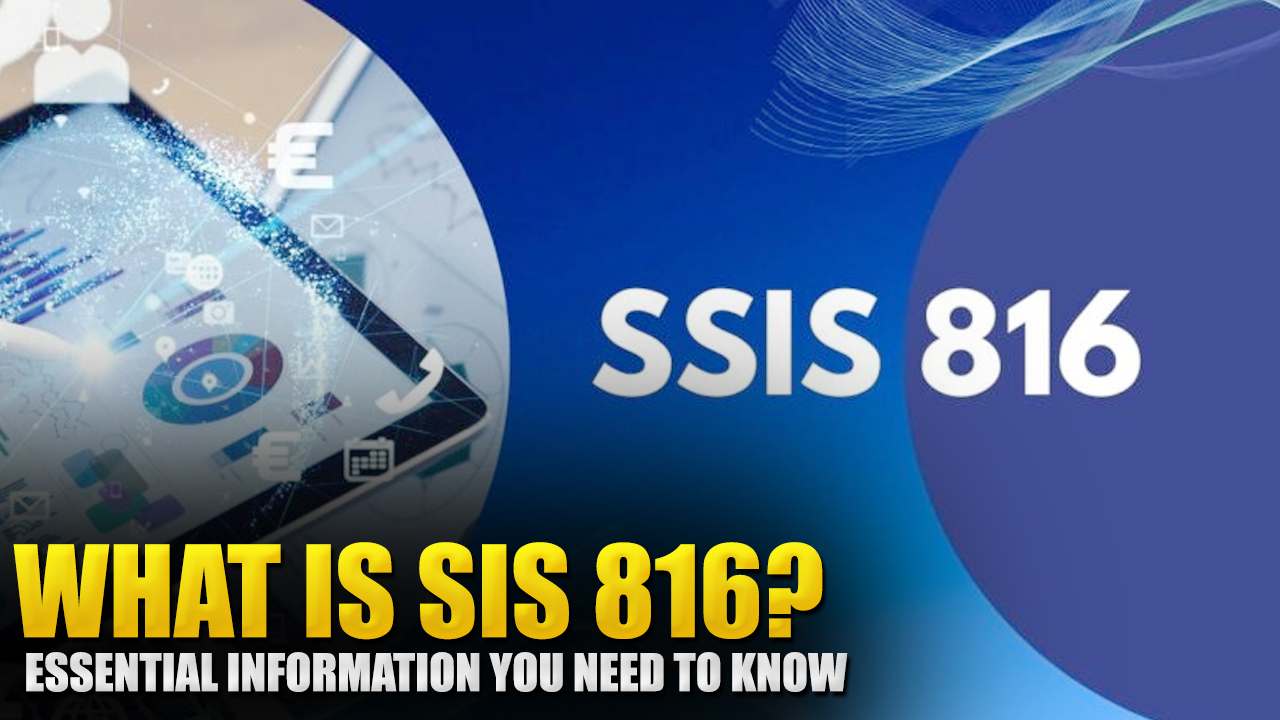While looking at the emerging field of data management, which is in constant development, a new giant appears – SSIS 816. It is not just a new version but a revolution of the past, achievements, and a new step towards tomorrow, a data-led tomorrow. Starts from a rock-solid base as its predecessors, SSIS 816 goes beyond the limitations and provides a range of powerful enhancements built to address the modern world’s problems that businesses face.
This is a series of blogs that gets to the nitty gritty of SSIS 816 and providing a roadmap to the remaining improvements as well as showing the direction to the promised land of data. Get ready to see the detailed enhancements in performance, get to know the specifics of the new security options, and find out lots of other improvements designed to support your organization’s data management approaches.
Unveiling the Power of SSIS 816
The enhancements that SSIS 816 provides constitute an exquisite set-up that would help organizations improve their means of data integration and open new opportunities in doing so. Let’s delve deeper into some of its most noteworthy features:
- Enhanced Performance: SSIS 816 comes with a fairly improved performance compared to the earlier versions. Benchmarking shows increases in processing rates of up to 30%, which means that organizations can now work with tremendously large data sets. In simple terms, this leads to the concept of quicker data ETL and therefore quicker decision making.
- Cloud-Native Capabilities: Businesses are moving to the cloud, and it works with cloud data. This lets them enjoy cloud benefits like scalability and flexibility, all while keeping their reliable SSIS systems.
- Advanced Security Features: Security is one of the most critical aspects of information management in the current world dominated by the use of technology and big data. Consequently, it is imperative to state that SSIS 816 is provided with advanced security solutions for the protection of data in the course of integration. Such features include capability of encrypting data, controlling access to it, and having features to audit the data to maintain its integrity as well as use to meet regulatory measures.
- Scalability and Automation: SSIS 816 simplifies scaling data integration for businesses. It handles large data volumes, complex processes, and automates data integration tasks with minimal manual intervention.
Table: Comparison of SSIS Versions
| Feature | SSIS 2019 | SSIS 816 |
|---|---|---|
| Performance | Baseline | Up to 30% improvement |
| Cloud Support | Limited | Seamless integration with cloud platforms |
| Development Tools | Basic | Modernized and user-friendly |
| Security Features | Standard | Advanced encryption, access controls, and auditing |
| Scalability | Moderate | Highly scalable to handle large datasets |
| Automation | Basic scheduling | Advanced automation capabilities |
Leveraging SSIS 816 for Success
It helps enterprises in every industry get the most from their information. Here are a few examples of how organizations can leverage its capabilities:
- Retail: Optimise the data of the customers, integrate and manage the loyalty schemes and deploy targeted marketing techniques based on the real time data.
- Manufacturing: Optimize production flows and quality by gathering information from production lines, sensors and other sources to provide real-time visibility of production lines.
- Healthcare: Improve patient care by assimilation of data from multiple sources, and improve diagnostic procedures, treatment plans and research.
- Finance: This way, the intermediate financial reporting will be automated, using the technologies in the risk management along with the improved analysis of the financial data.
Addressing Common Concerns (FAQs)
Q: Is SSIS 816 backward compatible with existing SSIS packages?
Ans: Indeed, the uneven labeling for SSIS 816 does not in any way mean that you cannot create packages using prior versions of the SSIS tools. However, you may need to extend new features and functionalities using packages by modifying them a little.
Q: What are the prerequisites for using SSIS 816?
Ans:The particularities of its application will vary depending on the deployment of SSIS 816. However, different variations of operating systems can work well together, but it is advised to have the operating system and the inevitable . NET Framework version installed.
Q: Where can I find resources to learn more about SSIS 816?
Ans:Having scrutinized the document we can predict that the Microsoft company will offer the detailed documentation, tutorials, and learning materials for it. Moreover, there may remain a large burden on the developer community to contribute to the concoction of a large amount of content along with sharing the best practices.
Conclusion:
SSIS 816 introduces a new concept of data integration which enables a business to fully leverage on the data resources that it has. This makes it perform better, secure and easily integrated with the cloud, which makes it a good solution for all organizations. In other words, if you need to increase efficiency and enhance operational processes, obtain more profound data analysis, or optimize the making of the decision, it will provide you with an effective solution for solving the present and future challenges associated with data management. With the age of SSIS 816 set to advance coupled to the growing fabric of developer community, it does seems that better and new features and functionalities should not be far from sinking in deeper into the market as the ultimate data integration platform.
Thus, seeking for and accepting the methodology outlined in SSIS 816 will give an organization a great edge to its competitors in the contemporary world, where data is regarded as a critical success factor. Therefore, start your transition to a new era of business efficiency built on data analysis – discover how SSIS 816 can work for you.




